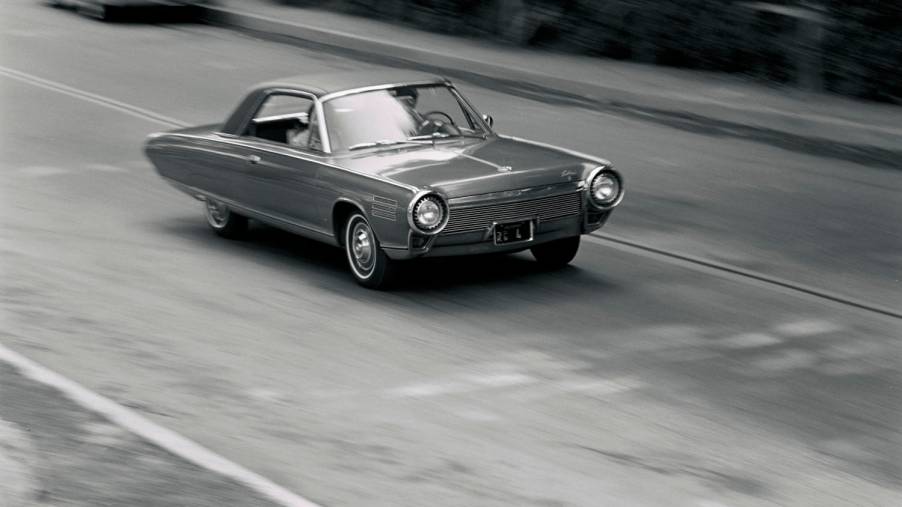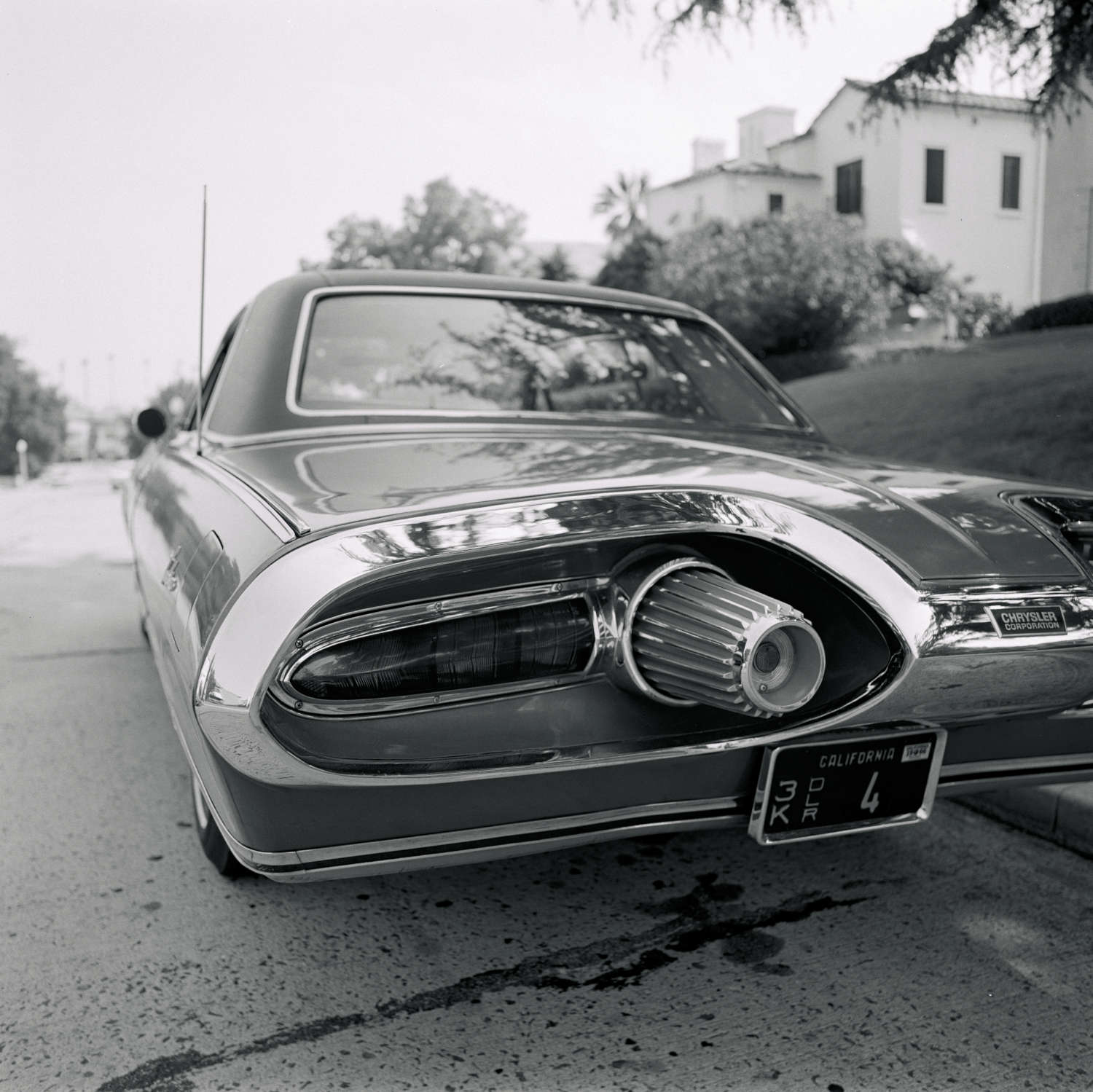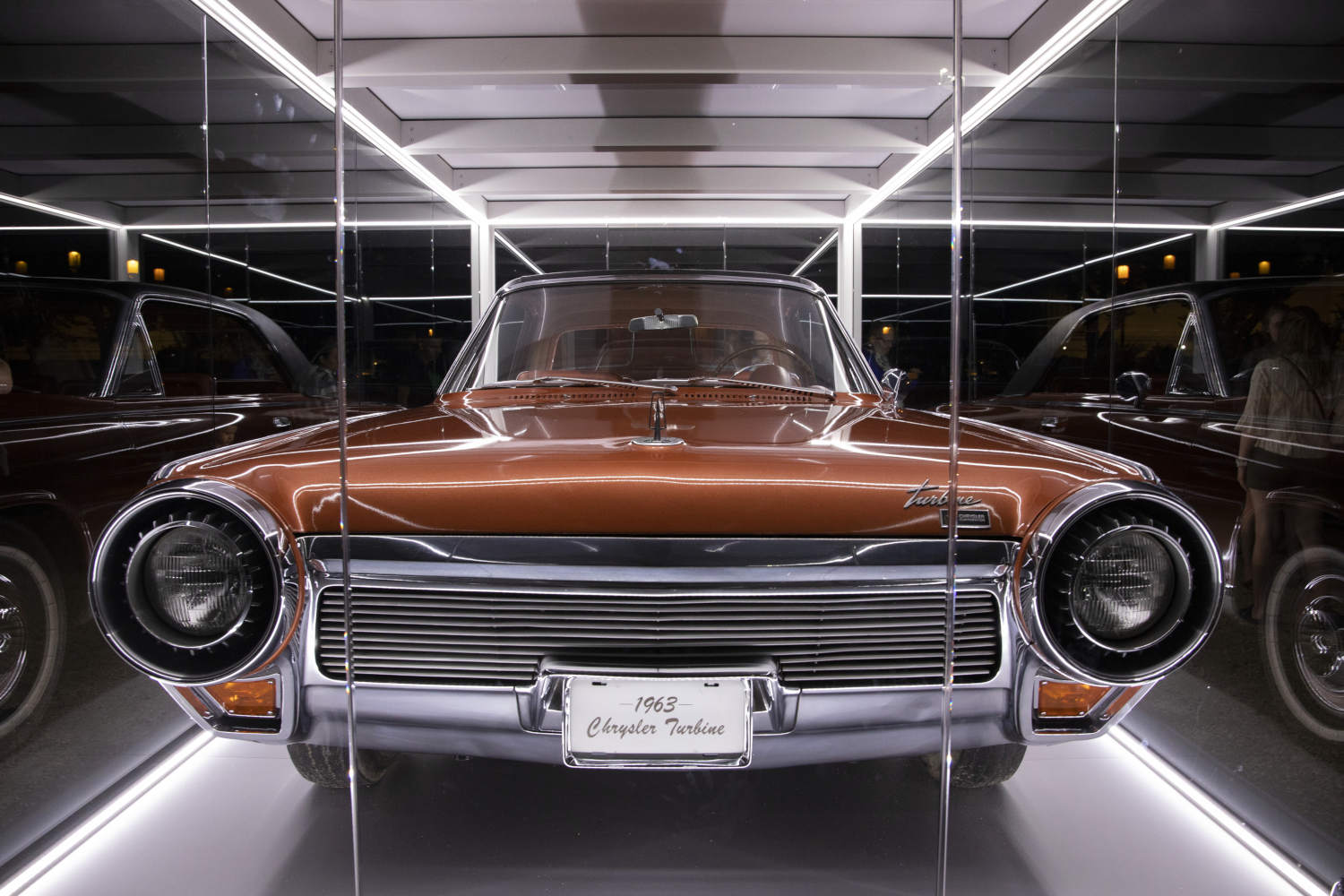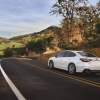
Chrysler Turbine Car: Why the Government Made Chrysler Crush Its Jet Cars
Have you ever heard about the Chrysler turbine car? It was big news back in the ’60s but never became a full-production car. The history of the Chrysler Turbine Car is not an unusual story for innovative vehicles that were just ahead of the times, which Chrysler was very into back in the day.
How much is a Chrysler turbine car worth?

Chrysler made the Chrysler Turbine Car for a very short period between 1963 and 1964. The brand experimented with turbine cars around that time, and the Chrysler Turbine Car was the crowning jewel of this time. That’s partially due to the bronze color of the vehicle. According to the history provided by Henry Ford, Chrysler Corporation originally documented the information in the 1964 book called “History of Chrysler Corporation Gas Turbine Vehicles.”
At the time, there was no place to manufacture the turbine engines. For Chrysler to build a factory for turbine engines, there was an estimated cost of around $1 billion. The machines would have cost $10,000 per engine to produce. These days, these vehicles are priceless due.
In a 2006 article by MotorTrend, it stated the Chrysler turbine car had 130 hp and 425 lb-ft of torque. The 1964 model had a two-stage gas turbine engine and a three-speed automatic engine.
The history of the Chrysler turbine car
While Chrysler had been working on turbine engines for a bit, the Chrysler Turbine Car was a brand new design with brand new technology. It was only offered in a bronze paint color called Turbine Bronze. It had two doors, a hardtop roof, power brakes, power steering, and power windows.
Chrysler built one car a week until all 50 vehicles were completed in October 1964. The company called this initiative the Chrysler Turbine program. The turbine engine had many advantages and sounded like a jet, hence the name “jet car.” It had fewer moving parts, and it would run on any flammable liquid. In addition to that, drivers of the Turbine car found the engine was smooth and required less maintenance during the program.
The engine was an A-31, the fourth-generation turbine engine developed by Chrysler. According to a New York Times piece from April 29, 1973, it says:
“Instead of being driven forward as the jet plane is by the reaction to the thrust of its exhaust gases, the gas turbine automobile must convert the engine’s thrust to torque or rotary power to drive the regular automatic transmission. In both cases, the gas that operates the engine is air, heated to 1,850–2,500 degrees Fahrenheit to make it explosively expansive so it will spin the turbine blades.”
Gas Turbines: Present and Future | The New York Times
Crushing the turbine engine dream

At the time, the different fuel options were a big selling point for buyers. The same article suggested the turbine car could drive on kerosene, jet fuel, diesel, grade furnace oil, or even soybean oil. Some of the cars went to families to test, while others went on a sort of cross-country tour. The automaker eventually had the Ghia company produce the Chrysler cars in Italy, which is where the problems started.
Unfortunately, Chrysler destroyed almost all of the produced versions of the turbine cars. The government wanted to charge import taxes on the cars made by Ghia, which would have been incredibly expensive. Chrysler could either pay the full import duties on the jet cars or have the vehicles crushed. Some of the vehicles that remain do not have a turbine engine.
The story about the Mexican president
One of the touring turbine cars ended up in Mexico. At the time, people wanted to test the fact that the jet car would run on anything flammable. Adolfo Mateos, President of Mexico at the time, wondered if Chrysler was serious about the “any” flammable liquid fuel thing. He asked if tequila would count since it was flammable. Chrysler did some quick tests to determine that the vehicle could indeed run on tequila. Mateos took a short ride in the tequila-powered car to prove its point.
Chrysler would remove the engines before sending the vehicle away. The automaker made only about 70 vehicles in total. Chrysler crushed 46 of the remaining options, and nine of the cars are floating around in museums. Jay Leno has one in his car collection, and another one lives in a private collection somewhere. Otherwise, the Chrysler turbine car remains a blip in the history of experimental vehicles.



